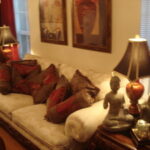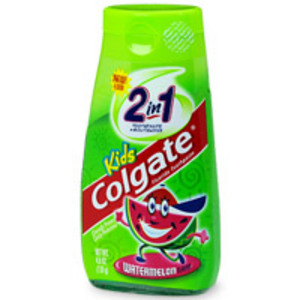Your grandchild has just lost her first tooth or received his first haircut. How to commemorate such a momentous event? Believe it or not, you’ll find an exquisite, porcelain Limoges box designed especially to memorialize those first strands of snipped hair, as well as one that will hold the first lost tooth.
If Limoges went so far as to design a mini container for these, you can bet you’ll find one that will fit any need you have. It didn’t take me long to find something that could commemorate just about any holiday, major life event, and collectible category (mini hats, shoes and bags, for example). Even the women from the Moulin Rouge have been spun off into a Limoges collectible. They’re represented in the form of a tiny, hinged porcelain mini trinket box.
Limoges manufactures much more than these boxes. You’ll hear the name come up time and time again at the typical auction, so if you find you get hooked on the handicraft of the collectible boxes I’m focusing on here, take a look at their other creations, all highly collectible and sought after.
It’s more than just the look that makes a Limoges item collectible. The history behind it, and the current manufacturing processes certainly play a role, adding to the mystique and individuality of the pieces. Limoges, a French city southwest of Paris, predates Roman times. Its physical placement, directly on the river Vienne, makes Limoges an easy, accessible stop; one that would even be called necessary in those early years when journeys were more arduous than enjoyable.
Though porcelain reigns there now, during the Middle Ages enamels were the rage. That trend declined substantially by the Middle Ages. Unlike many American towns which found themselves dependent on one industry to fuel the economy, an industry that dried up for one reason or another, the artisans of Limoges didn’t curl up and die simply because the trends had changed. Luckily they caught a break. Just as the call for enamel pieces dwindled, kaolin, an essential clay in the making of porcelain, was found just 18 miles southwest of Limoges at St. Yreix. With that, a new era began for the town.
Limoges built its first porcelain factory a mere six years after the initial find of the kaolin. The kaolin is combined with pulverized feldspar and quartz. Then a fine process of milling, pulverizing, heating, molding and firing begins. Europeans consider this product porcelain only if it retains a translucent quality. Every piece does not meet the rigorous standards. Many crack or break during the process and must be discarded. What sets the porcelain product apart from other pottery forms may be considered a technicality, but a necessary one to the creators of this art form. Pottery will absorb water. Conversely, even if porcelain has been chipped or cracked, it will not retain water. Nonetheless, chipped or cracks items have to go. They won’t meet the Limoges standards.
The end result of creating the porcelain is just the beginning of the process. The shape is there, but an artisan then decorates the individual object and adds tiny hinges if needed on any one of the figurines, pill boxes or other porcelain product you’ll find bearing the Limoges mark. Once the artist completes his or her work with the special paints used on porcelain, the product goes through another firing process. This tedious nature is what makes it so collectible. By the end of the process, like snowflakes, no two products will turn out the same. So when a collector speaks of having a one-of-a-kind item, this is the definition.
The real boost to Limoges came when royalty gave its seal of approval. Shortly after the factory was established, Louis XVI bought it. For a time, production was still limited due to restrictions on the production of porcelain products. The French Revolution brought an end to these restrictions, and Limoges flourished in the wake. Once again, its physical placement played a huge role: a mixture of its proximity to the essential element, as well as its general accessibility by land or water. Moreover, the city was lucky enough to have a grand forest in Limousin which then could supply the extensive amounts of wood needed to fire the kilns used in the production of porcelain. On all counts, Limoges proved the ideal spot. Workers flocked to the town, and by 1819, four porcelain factories graced the land. That would increase again to 27 factories, supporting some 3,166 workers by 1861.
Limoges had a stronghold on the French porcelain market but didn’t really start to take over the American scene until around 1855. It was a Limoges ancestor who made that happen. David Haviland who had come to Limoges from New York in 1842 in search of porcelain to import to the United States, got the ball rolling. He knew of the beauty of the product and the marketability as his own family had emigrated from Limoges. The demand for porcelain from Limoges by the United States called for the Haviland factory to construct its own factory in the town by 1855. By the late 1850’s, the United States called for about half of the porcelain being designed in the city.
Given the extent to which Limoges now depended on the United States for its sales, it naturally suffered a major blow during the Civil War when exports to the United States were curtailed, then halted entirely. It scrambled to pick up the export business to other countries which helped a bit.
It was during the 1870’s that Limoges perfected its porcelain process, and the items produced then are considered to be some of the finest porcelains ever made. Today, Limoges carries a designation by the French government. So, when you see a piece of porcelain, the mark you see is not from a particular studio. It may come from one of many studios in this region that choose to use that standardized Limoges mark formulated by the government. And that’s natural given that the elements (including the traces of soil) needed to produce these delicate creations can be found only in Limoges, France.
It’s no wonder that with all of this creative talent behind the name, Limoges spawned its own museum – -Musee de Limoges – -in 1845. The museum features some 11,000 pieces, thought not all porcelain. It’s also no wonder that the pieces have been given to heads of state over the years from the tsars of Russia to kings and queens Europe.
So, it’s not very surprising that we covet these nowadays. If it’s a piece good enough for a king or queen, it must be something worth having, right? You’ll have an easy time finding these pieces, as a simple Internet search yielded dozens of shops carrying the Limoges line. In fact, the tough part may be in choosing and displaying them, rather than finding them.
Oddly enough, I’ve seen them often at jewelry and gem shows at very reasonable prices, I paid less than $50-60 for some of them. The ones I’ve seen online sell around $140+, not including auctions which may be better deals. I’ve also found them in consignment shops, but I rarely see just one of them. The shop owner who spots these and sees the potential generally stocks quite a few. And if they don’t have it in, they can get it, so ask for a catalogue. There is a Limoge Auction House online at www.limoges-auction.com, as well. At the very least, the online venues will give you an idea of the many things on the market. At one Web site alone, I found 24 versions of the Eiffel Tower in the Limoges pillbox format. If you can envision it, Limoges has cast it in porcelain.





